First Computer MB05WIW Notebook Computer With 802.11b WLAN Card User Manual 2 of 3
First International Computer Inc Notebook Computer With 802.11b WLAN Card 2 of 3
Contents
- 1. User Manual 1 of 3
- 2. User Manual 2 of 3
- 3. User Manual 3 of 3
User Manual 2 of 3

Getting Started 2
39
INSTALLING THE VGA DEVICE DRIVER
Following is the procedure for installing the Video Accelerator 3D Adapter
VGA driver to your computer:
Installing VGA device driver for Windows XP
1. Click the Start button, then point to Run. The Run dialog box appears.
2. Click the Browse button and specify the directory as.
"E:\Drivers\WinXP\VGA\Graphics\Setup.exe".
3. Click "OK" to execute the setup program. The Setup box appears.
4. Click Next to install this driver when screen displays this command.
5. Click “Yes” to accept the License Agreement .
3. Tick the option "Yes, I want to restart my computer now.", and press
Finish to restart your system.
INSTALLING THE AUDIO DEVICE DRIVER
Your notebook computer uses the Realtek Audio controller.
Installing Audio device driver for Windows XP
1. Click the Start button, then point to Run. The Run dialog box appears.
2. Click the Browse button and specify the directory as.
"E:\Drivers\WinXP\Audio\Setup.exe"
where the audio driver is located.
3. Click “OK” to implement the setup program to install this driver.
4. Click “Next” to continue the following steps.
5. Tick the option "Yes, I want to restart my computer now.",

Notebook User Guide
40
and press “Finish” to restart your system.
INSTALLING THE MODEM DEVICE DRIVER
Please follow the procedures below for installing the Agere System AC'97
Modem driver:
Installing Modem driver for Windows XP
1. Click the Start button, then point to Run. The Run dialog box appears.
2. Click Browse button and navigate to the directory as
"E:\Drivers\WinXP\modem\setup.exe"
3. Click “OK” to implement the setup program to install this driver.
4. Click “OK” to install the modem driver.
INSTALLING EZBUTTON UTILITY
Following is the procedure for installing the Internet, e-mail button utility.
Installing EzButton Utility for Windows XP
1. Click the Start button, then point to Run. The Run dialog box appears.
2. Click Browse button and specify the directory as
"E:\Drivers\WinXP\EzButton\EzButton System.exe".
3. Click “OK” to implement the setup program.
4. Click Next twice to continue the installation.
5. Click Yes to create the specified directory.
6. Click Next twice to complete the installation.
7. Press Finish to restart your computer.

Getting Started 2
41
INSTALLING THE WIRELESS LAN DEVICE DRIVER AND
UTILITY
INSTALLING THE WIRELESS LAN DRIVER
Please follow the procedures below for installing the Intel Pro Wireless LAN
2100 3B Mini PCI Adapter driver:
Installing Wireless LAN driver for Windows XP
1. Click the Start button and then click Run. The Run dialog box appears.
2. Click Browse button and specify the directory as
“E:\Drivers\WinXP\Wireless\SetupWLD.exe”
3. Click “OK” to continue installing the WLAN driver.
INSTALLING THE WIRELESS LAN PROSET UTILITY
Installing WLAN-PROSet Utility for Windows XP
1. Click the Start button, then point to Run. The Run dialog box appears.
2. Click the “Browse” button and specify the directory as
"E:\Drivers\WinXP\PROset\PROSet.exe".
3. Implement the setup program to install this driver. The Welcome dialog
box appears.
4. Click “Next” to process the further step continuously when screen
displays this command.
5. Tick the option “I accept the terms in the license agreement”,
and click “Next” for further step processing.

Notebook User Guide
42
6. Tick the option “Typical”, and click “Next” again.
7. Press “Install” to setup the program.
8. Press “Finish” to finalize the installation
INSTALLING THE LAN DEVICE DRIVER
Please follow the procedures below for installing the LAN driver:
Installing LAN driver for Windows XP
1. Click the Start button, then point to Settings, and click Control Panel.
2. Double-click the System icon, point to Hardware tab, then click the
Device Manager folder tab. You will find the Network Adapters.
3. Double-click Realtek RTL8139 Family PCI Fast Etherent NIC under
the Network Adapters, then select the Driver tab.
4. Choose Update Driver.
5. Tick the option Install from a list of specific location (Advanced). You
will find another two options appear.
6. Tick only the option Include this location in this search.
7. Click Browse button and point to the LAN driver location as
“E:\Drivers\WinXP\Lan”.
8. Click Next to search and install the driver.
9. Click Finish to complete the LAN driver installation.

Getting Started 2
43
INSTALLING ALPS - TOUCH PAD DRIVER
Installing ALPS - Touch Pad driver for Windows XP
1. Click the Start button, then point to Settings, and click Control Panel.
2. Double-click on the System icon, Hardware and then click on the
Device Manager folder tab.
3. Click Mice and other pointing devices on this folder tab to show the
Standard PS/2 Port Mouse, then double-click it.
4. Select Driver and then choose Update Driver.
5. Select Install from a list of specific location (Advanced) and then click
Next
6. Click the "Don't search, I'II choose the driver to install", then click
Next.
7. Click the Have Disk tag, then click Browse button to navigate the Touch
Pad driver location as "E:\Drivers\WinXP\Touch Pad". Click “OK”
for confirmation.
8. Click Next to search the driver.
9. Click Finish to complete the Touch Pad driver installation.
INSTALLING GV3 DRIVER
Installing GV3 driver for Windows XP
1. Click the Start button, then point to Settings, and click Control Panel.
2. Double-click on the System icon, Hardware and then click on the
Device Manager folder tab. You will find a series of processors appear
on the list box.

Notebook User Guide
44
3. Double-click Intel® Pentium® M processor …
4. Select Driver and then Update Driver.
5. Select Install from a list of specific location (Advanced) and then click
Next.
6. Click the "Include this location in the search", then press Browse.
7. Navigate the GV3 driver location as "E:\Drivers\WinXP\GV3".
and click “Next” to for further processing.
8. Click Finish to finalize the installation.
2.6 Turning off Your Computer
If you are not going to use the computer for a while, it is best to turn off the
power of the computer for longer use. Before turning off the power, you need
to close first all application programs and shutdown the operating system.
After turning off the computer, make it a habit to leave the LCD panel open
for a while whenever used for an extended period of time. This allows the
inside parts of the computer to cool off. Closing the panel will force the heat
up against the LCD screen, which may degrade the LCD when done regularly.
More importantly, never close the LCD panel for a long period of time when
computer is on and power saving features are disabled.
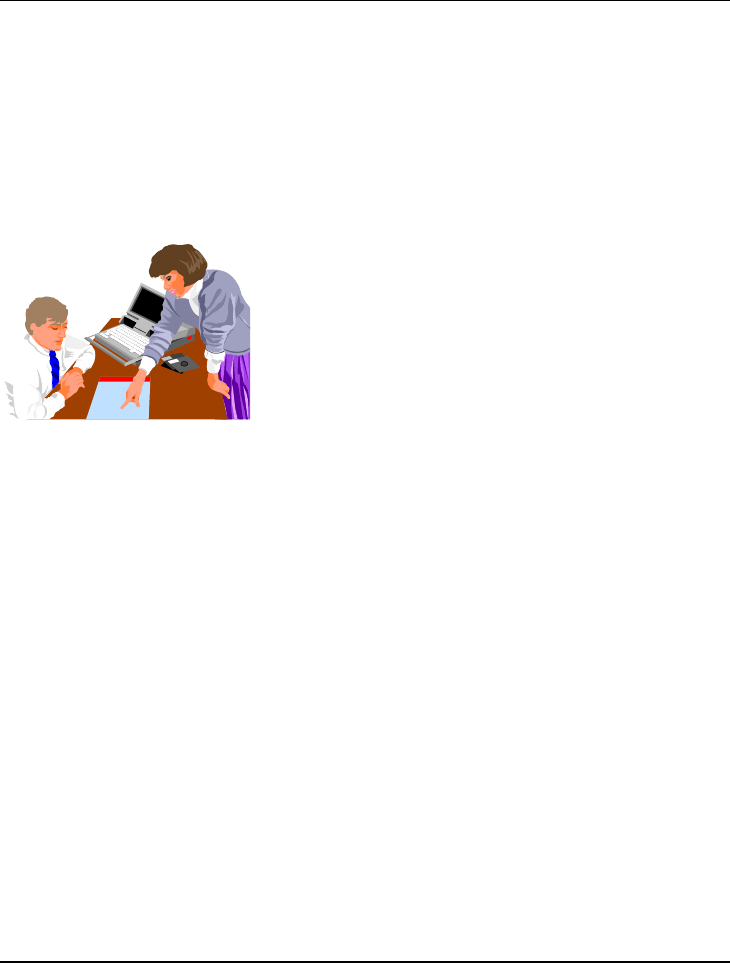
Using Your Notebook 3
45
3 Using Your Notebook
This chapter describes how to operate the standard
built-in features of the notebook that you normally would
use in your day-to-day computer work. If you are new to
computers and to your operating system, you also need to
read the manual for the operating system on how to work
with your computer. It is very important to familiarize
yourself well with the operating system. The succeeding
chapters not only guide you to go beyond the basics, but
also try other exciting features.

Notebook User Guide
46
3.1 Starting Your Operating System
The operating system is a must ingredient in using your computer. Without an
operating system, it is like playing chess without the chessboard. It is the
platform for all your software application programs to run on. The most
popular operating system today is Microsoft Windows. You should have
installed one operating system by your dealer unless you are an expert
computer user and would need a more powerful operating system. If you have
an operating system already installed in your computer, then you would be up
and running after you power on your computer and boot up the system. Check
your operating system manual on how to run it.
3.2 Understanding the Keyboard
Functions
Your notebook computer is equipped with an 88 keys keyboard that provides
all the functionality of a full-sized 101 or 102-key IBM keyboard. Aside from
the standard typewriter-layout keyboard of your computer, there are a number
of extra features and function controls on the built-in keyboard including
Windows system hot keys.
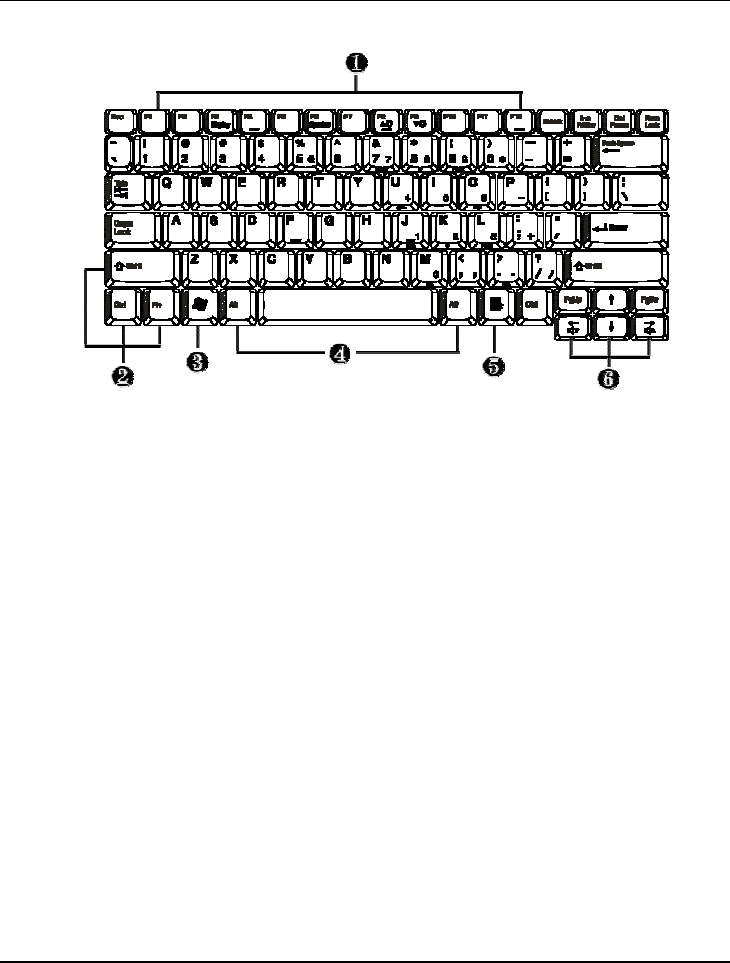
Using Your Notebook 3
47
1. Function Keys 2. Control Keys
3. Windows Start Menu Key 4. Control Keys
5. Windows Shortcut Key 6. Cursor Control Keys
Keyboard
Key features and operations are described below:
• Function Keys
Function keys are application-driven, like F1 through F12 can be found on
the keyboard. These keys work together with the Fn key to activate special
functions. Some keys (printed in blue on keypad) are preprogrammed with
dual functions.
• Control keys — Ctrl, Alt, Fn, and Shift are controls used in conjunction
with other keys to change their functions. To use control keys, press and
hold the control key while pressing another key. For example, "Press Ctrl-
C" means to hold down the Ctrl key and type the letter C. Key
combinations work especially to the application you are running.

Notebook User Guide
48
• Windows keys
Use the following two keys to facilitate your work:
➟ Start Menu key
Displays the Start menu.
➟ Shortcut/Application key
Provides quick access to shortcut menus. This key acts like a right
mouse button.
• Cursor Control keys
Cursor control keys let you position the cursor on the screen where you
want. In the screen, the cursor is a blinking underline, block, or vertical
bar depending on the application. The cursor indicates where the next text
typed is inserted.
• Typewriter keys
Typewriter keys (also called alphanumeric keys) are used to enter text and
characters. Keys with blue print on them behave differently when
combined with control keys.
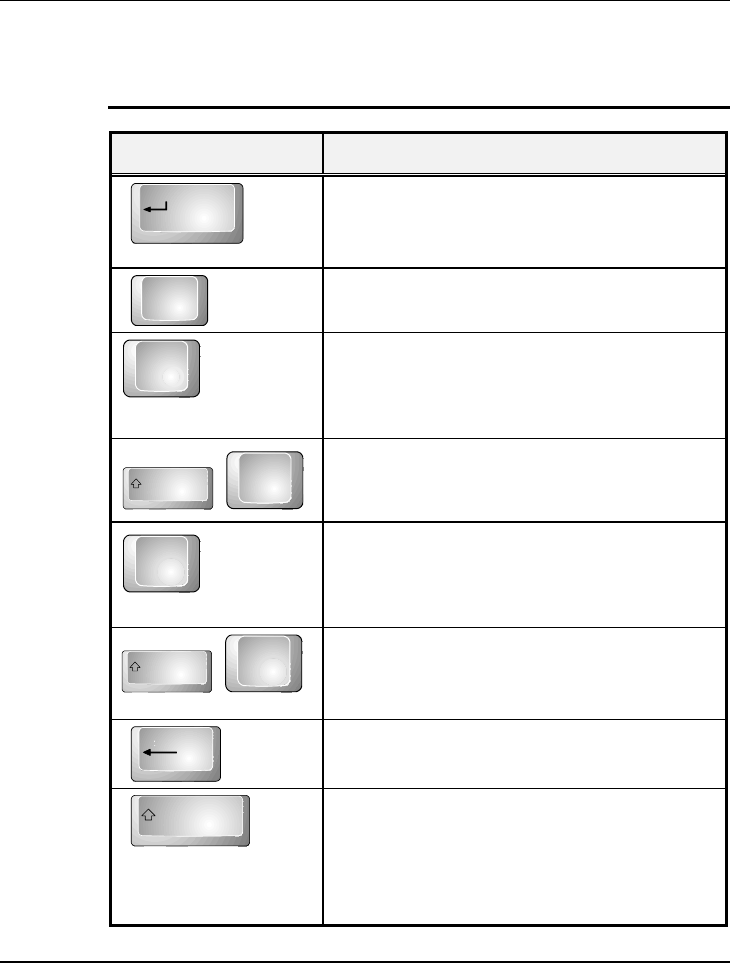
Using Your Notebook 3
49
BASIC KEYBOARD FUNCTIONS
Keypad Function Description
Enter
<Enter> key. Execute a command. Within many
text editing application programs, the <Enter>
key inserts a hard carriage return, just like what
ordinary typewriter does.
Esc
<Esc> key. Press this key to cancel or escape
from a command or function.
N
umLk
Insert
<Ins> key. Known as the Insert key. Press this
key to toggle the keyboard data entry from insert
to type over mode.
Shift
+PrtSc
S
y
sR
q
Shift +<PrtSc> key. Known as the Print Screen
key. Press this key to map the whole screen to
share memory for your specific usage.
ScrLk
Delete
<Del> key. Known as the Delete key. Press this
key to delete the character to the right of the
cursor, or delete marked texts or items.
Shift
+Pause
Break
Shift +<Pause> key. Press this key to
temporarily halt execution of a command.
Pressing any other key to resume execution of a
command.
Backspace
<Backspace> key. Press this key to delete the
character to the left of the cursor.
Shift
<Shift> key. Press this key in combination with
alphabet letters to produce uppercase letters in
typing. Use this key in combination with those
two-character keys (found on the second row of
the keyboard) to produce the upper marked
ke
y
s. Also used in most a
pp
lication
p
ro
g
ram in
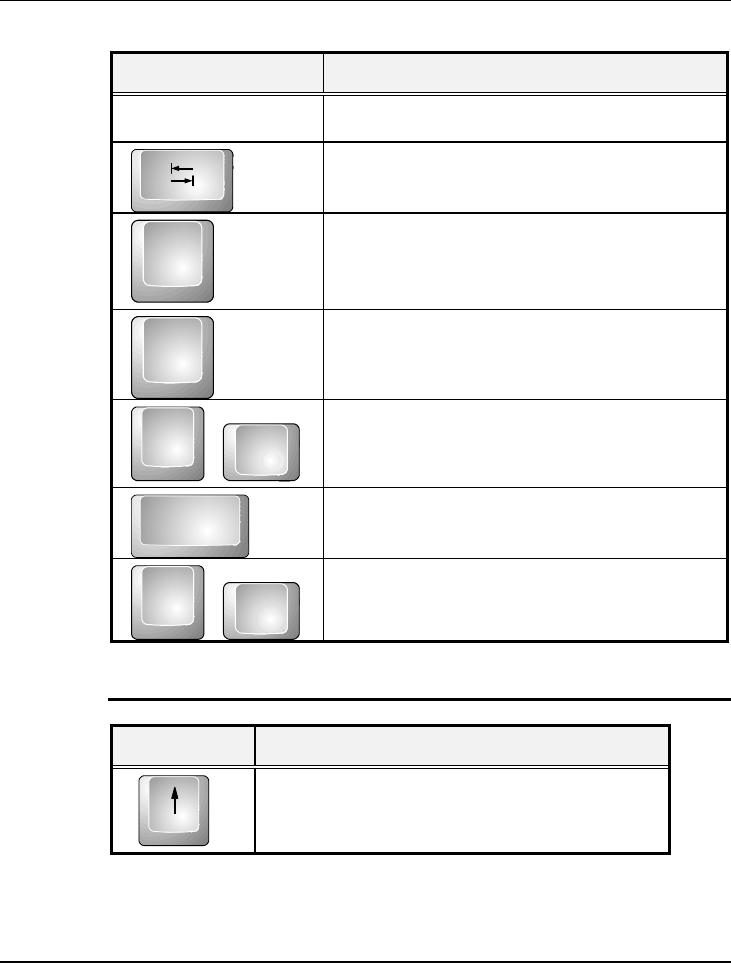
Notebook User Guide
50
Keypad Function Description
combination with other keys to execute a certain
command.
Tab
<Tab> key. Press this key to move the cursor to
the next tab stop on the right. This key works
much the same as in ordinary typewriter.
Ctrl
<Ctrl> key. Known as the Control key. Used in
most application program in combination with
other keys to execute a certain command.
Alt
<Alt> key. Known as the Alternate key. Used in
most application program in combination with
other keys to execute a certain command.
Fn +
N
umLk
Insert
Fn +<Num Lock> key. Activates the embedded
15-key numeric keypad. The keys are color
coded blue.
Caps
Lock
<Caps Lock> key. Used in most application
program to always activate uppercase alphabet
characters.
Fn + ScrLk
Delete
Fn +<Scroll Lock> key. Used in most
application program to scroll the screen without
having to move the cursor.
CURSOR CONTROL KEYS
Keypad Function Description
Up arrow key. Moves the cursor up one line at a
time.
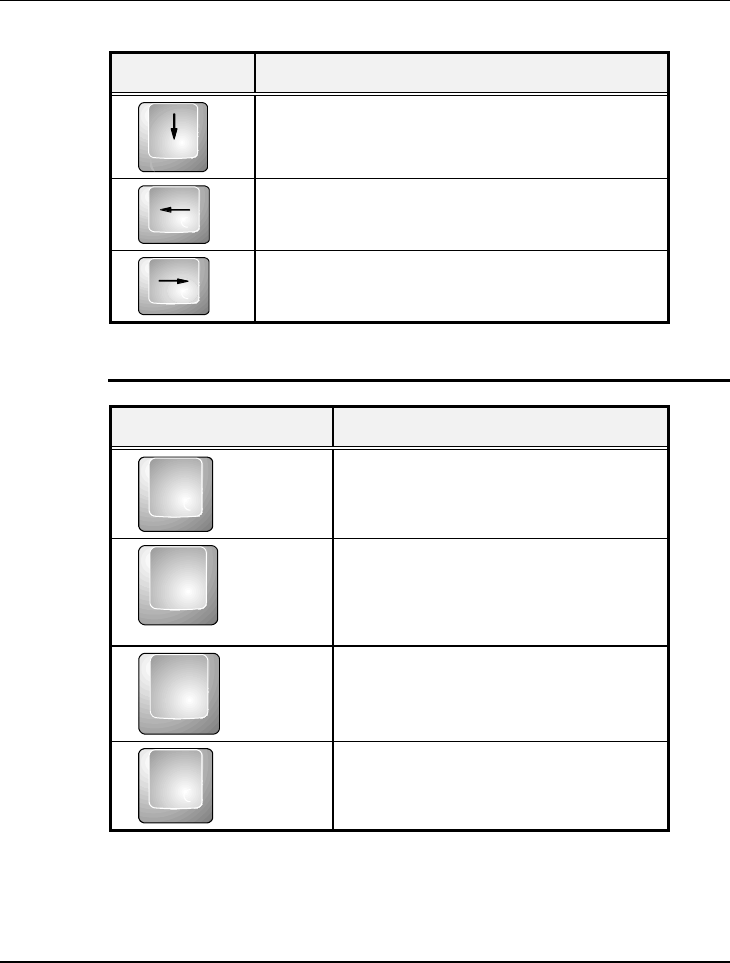
Using Your Notebook 3
51
Keypad Function Description
Down arrow key. Moves the cursor down one
line at a time.
Left arrow key. Moves the cursor to the left one
space at a time.
Right arrow key. Moves the cursor to the right
one space at a time.
SCREEN CONTROL KEYS
Keypad Function Description
Home
<Home> key. Moves the cursor to the
beginning of a screen or line.
PgUp
<PgUp> key. Moves the cursor up one
screen at a time
PgDn
<PgDn> key. Moves the cursor down
one screen at a time
End
<End> key. Moves the cursor to the
end of a screen or line.
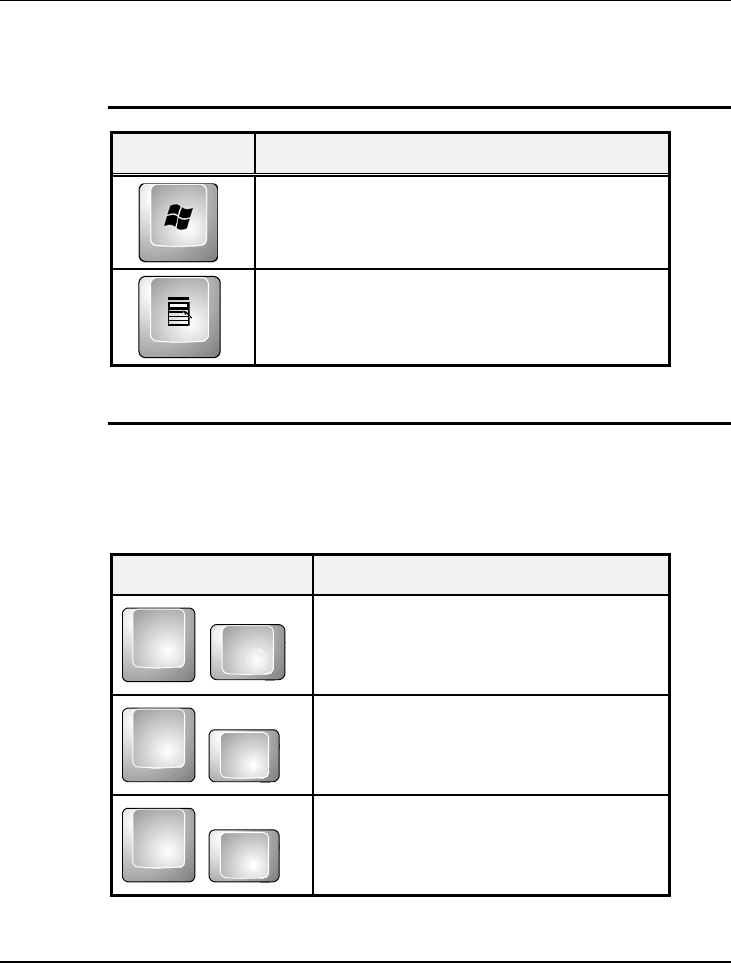
Notebook User Guide
52
WINDOWS HOT KEYS
Keypad Function Description
<Start> key. Pulls up the Windows Start menu.
<Right Click> key. Performs a mouse right-click
function for Windows system.
SPECIAL FUNCTION KEYS
The notebook has special system function keys that activate key serving dual
functions. When pressed in conjunction with the <Fn> key, these keys set
specific system parameters and are sometimes referred to as "hot keys".
Keypad Function Description
Fn +F3
Mute
Enable or Disables the built-in system
speaker.
Fn +F4
Suspend
Press this key to activate the system into
the suspend mode.
Fn +F7
CRT
Switches display between LCD, CRT, or
LCD and CRT simultaneously.
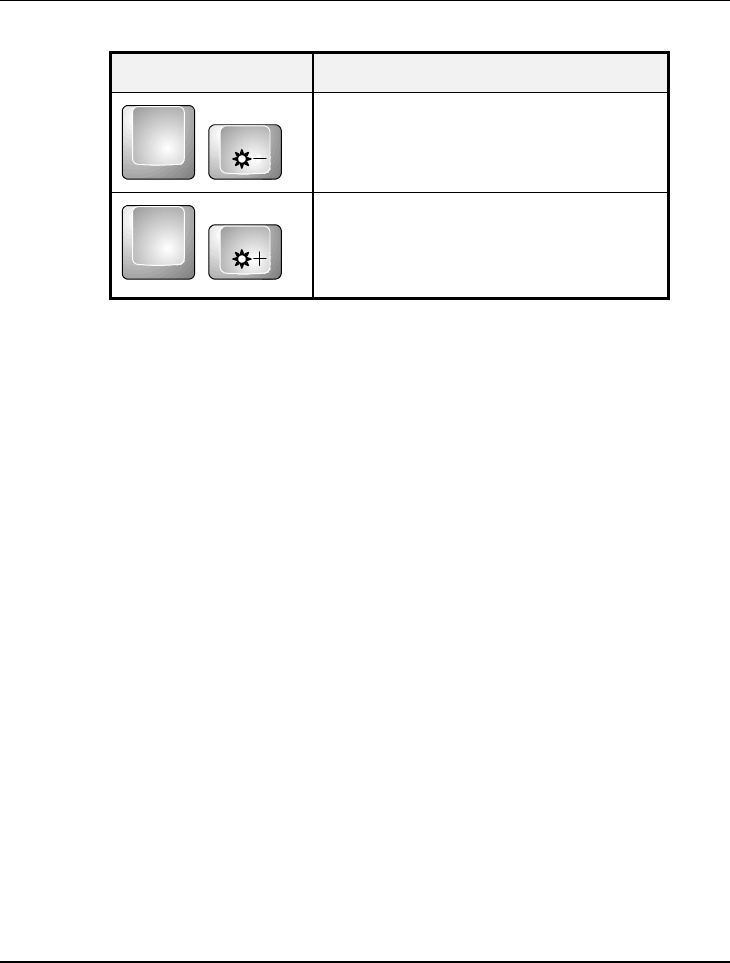
Using Your Notebook 3
53
Keypad Function Description
Fn +F8
Decreases the brightness of LCD display
incrementally.
Fn
+
F9
Increases the brightness of LCD display
incrementally.
3.3 Using the Glide Pad Pointing Device
Your computer comes with a built-in Glide Pad pointing device that is found
on the center of the palm-rest surface.
The Glide Pad offers a number of options that let you customize how it
functions. To access these options, locate the Control Panel and double click
on the Mouse icon. The options let you control the size and color of the
cursor, cursor speed, the accepted double-click speed, and selection button
orientation.
The Glide Pad works a mouse pointing device replacement that is used under
Windows-based operating system. You can use the standard Microsoft driver
that is compatible with the Glide Pad device and is normally used under
Windows-based operating system. However, if you want to utilize the added
features of the Glide Pad, you may want to try installing its own device driver
that comes with added utilities for enhancing the function of the device.
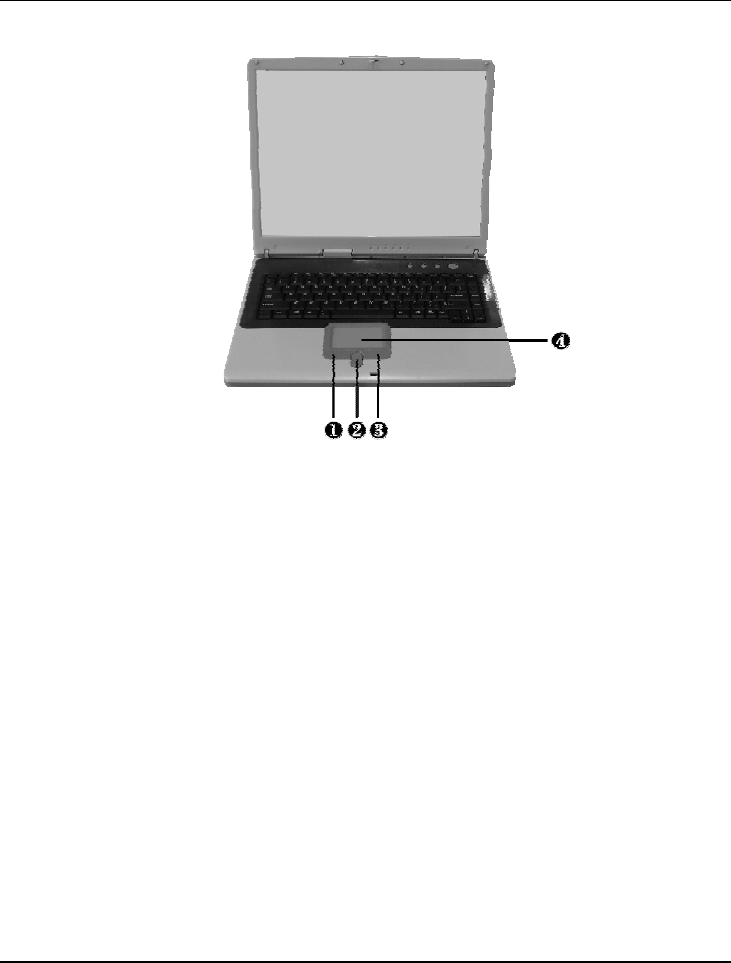
Notebook User Guide
54
1. Left Selection Button 2. Scroll Button
3. Right Selection Button 4. Glide Pad
Glide Pad Features
Here how to use the Glide Pad pointing device:
1. The rectangular surface acts like a miniature duplicate of your display
screen. To move the mouse cursor, place the finger lightly on the sensor
pad and move in the desired direction. If you reach the end of the pad, lift
your finger and place it back down on the other side of the pad.
2. To select an item, click on the item by pressing the left button control or
by simply tapping on the surface once. A light, quick tap always works
best. To execute an item, click the left button twice or do a quick double
tap on the surface.

Using Your Notebook 3
55
3. To simulate holding the mouse button down (dragging an icon or
selection), use the tap-and-drag gesture. This feels much like a double-
click, except that the finger remains on the pad after the second tap: Tap,
lift, tap, hold and move. The simulated button remains held as long as the
finger remains on the pad.
4. To scroll up or down the screen, just slide up or down the scroll button to
move the screen up or down.
☞
Avoid spilling any liquid on the Glide pad surface and always keep the
Glide pad surface and pointing finger dry from sweat built-up. Also do not
expose Glide pad to any magnetic source object.
3.4 Configuring Your Screen Display
The VGA display function of your notebook is based on a high performance
AGP local bus controller and is fully IBM VGA compatible. This controller
offers a large set of extended functions and higher resolutions especially useful
when you are connecting an external high-resolution and high-frequency CRT
or LCD.
Please Refer to Section 5 "Installing the Notebook Device Drivers" of Chapter
2 in this manual for the procedures on how to install the VGA device driver
under Windows. After installing the VGA driver, you would then configure the
display resolution or screen size to match your LCD display panel. This
notebook computer model provides 1024x768 as well as 1280x1024 LCD
panels. You would also probably want to set the amount of color output to
display sharper images and photos.

Notebook User Guide
56
POSSIBLE DISPLAY CONFIGURATIONS
The table below shows you the possible display resolution you can set when
using either the LCD display or the external monitor (CRT):
Display Possible Resolution Maximum Colors
1024x768
XGA LCD
640x480
800x600
1024x768
16 million colors
16 million colors
16 million colors
1280x1024
SXGA+ LCD
640x480
800x600
1024x768
1280x1024
16 million colors
16 million colors
16 million colors
16 million colors
CRT Only 640x480
800x600
1024x768
1152 x 768
1280x1024
1400x1050
1800x1440
16 million colors
16 million colors
16 million colors
16 million colors
16 million colors
16 million colors
☞
65,536 or 64K colors is also equivalent to 16-bit high color while 16 million or
16M colors is equivalent to 32-bit true color.
☞
You can use the <Fn> + <F7> hot-key to switch the display between LCD
only, CRT only, or both LCD and CRT display.
CHANGING THE DISPLAY PROPERTIES UNDER WINDOWS
To change the display properties of your screen under Windows system, just
right-click on the desktop area and select Properties or go to the Control Panel

Using Your Notebook 3
57
and click on the Display icon. The Display Properties dialog box will appear on
your screen. Click on the Settings tab to set your desired configuration. Make
sure to follow the configuration table above.
☞
If you cannot configure the display properties, change the display driver
first as mentioned on Section 5 "Installing the Notebook Device Drivers" of
Chapter 2 in this manual. Consult your dealer for the latest Windows VGA
driver.
3.5 Knowing the Power Saving Features
One of the great features in your notebook computer aside from its superior
performance is the ability to save energy power. Your computer is designed to
incorporate intelligent and advanced power management functions that turn
off power of most components when system is idle or not in use. This does
not affect the performance of your system as it monitors the activity of your
computer and resumes power and operating speed when activity is detected.
This feature not only gives you longer battery hours but cooler systems and
components as well. For more information on how to control the power
management features of your computer, refer to Power Management function
in Control Panel of Windows.
The definitions of power management mode are depicted as follows:
Full-On Mode
No device in the system is executed in power management, the system can
respond to all applications at maximum performance.

Notebook User Guide
58
Suspend to RAM mode
All devices are powered off except the other supporting components and
system memory where your working files are stored. You can activate this
either pressing the power button or setting the Suspend timer on the Power
Management function of the Control Panel in Windows. To resume full-on
state, press the power button.
Suspend to Disk mode
When this mode is activated, the context of the entire system is saved to disk
and all components and devices are powered off, while all clocks are also
stopped (except Real Time Clock or RTC). You can activate this by setting the
Hibernate (Windows 2000/XP) mode on the Power Management function of
the Control Panel in Windows. To resume full-on state, you can press the
power button.
Mechanical off Mode
All power, except the RTC (real time clock), has been turned off from the
system. This includes external AC power source and battery power source.
3.6 Working with the Built-in HDD
Your notebook computer is equipped with a built-in large capacity 2.5 inch
IDE hard disk drive where you store or install your computer operating system
and all application software programs. You need to format the hard disk
before using. The internal hard disk is normally assigned as Drive C after
formatting. Sometimes divided into two partitions, adding a Drive D. Since
your computer supports different hard disk capacities (up to 60 GB), you also
need to setup the disk type first on your computer’s BIOS SETUP program

Using Your Notebook 3
59
before formatting the disk drive. Your computer supports Auto-detect hard
disk type, so you do not need to set it manually. Your dealer should already
have done all of this for you. You can refer to Chapter 6 on how to run the
BIOS SETUP program.
You can increase the system’s storage capacity by replacing the standard hard
disk drive with a drive of greater storage capacity.
☞
If you wish to replace your hard disk, contact your local dealer for more
information about this dealer-installable device.
☞
Always turn off your computer first before removing the hard disk drive.
Failure to do so will damage the computer and the hard disk. Avoid jarring
or moving the computer while the hard disk is still being accessed.
3.7 How to Access the Optical Disk
Drive
Your system ships with an optical disk drive installed on the right side of your
computer. You would normally use the drive for installing operating system
and software application programs.
To insert and remove a disc on the drive:
1. Make sure the computer is turned on. Press the eject button found on the
door cover of the optical disk drive. The CD tray mechanism will pop-out
slightly and slowly pull out the whole length of the tray.
2. Place the disc on top of the CD tray with the label side facing up. Gently
press the compact disc onto the center spindle to secure the disc.
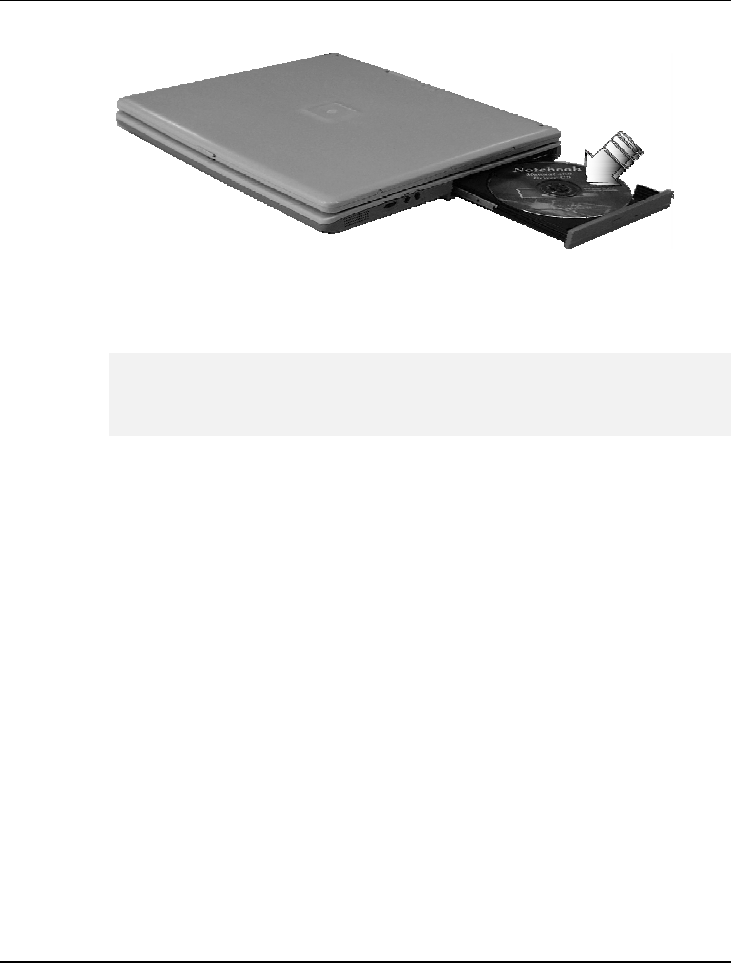
Notebook User Guide
60
3. To remove the disc, press on the center spindle and pull up the disc from
the side until the disc snaps out of the spindle lock.
☞
If the eject function is disabled by software or a power failure occurs, the
Emergency Eject Hole allows you to manually remove a CD from the
reader.
4. To close the optical disk drive, simply push the CD tray inside. The
optical disk drive LED will activate when the disc is detected. Wait until
the LED has turned off and then start to read the disc.
How to care the CD
When you handle CDs, pay attention to the following guidelines:
• Always pick up the CD by its edges.
• Avoid scratching or soiling either side of the CD.
• Do not write with the hard ball-point pen or apply labels on either side of
the CD.
• Keep the CD away from direct sunlight or high temperatures.
• Clean fingerprints or dust from the CD by wiping it with a soft cloth.
The above points also apply to other optical storage media.
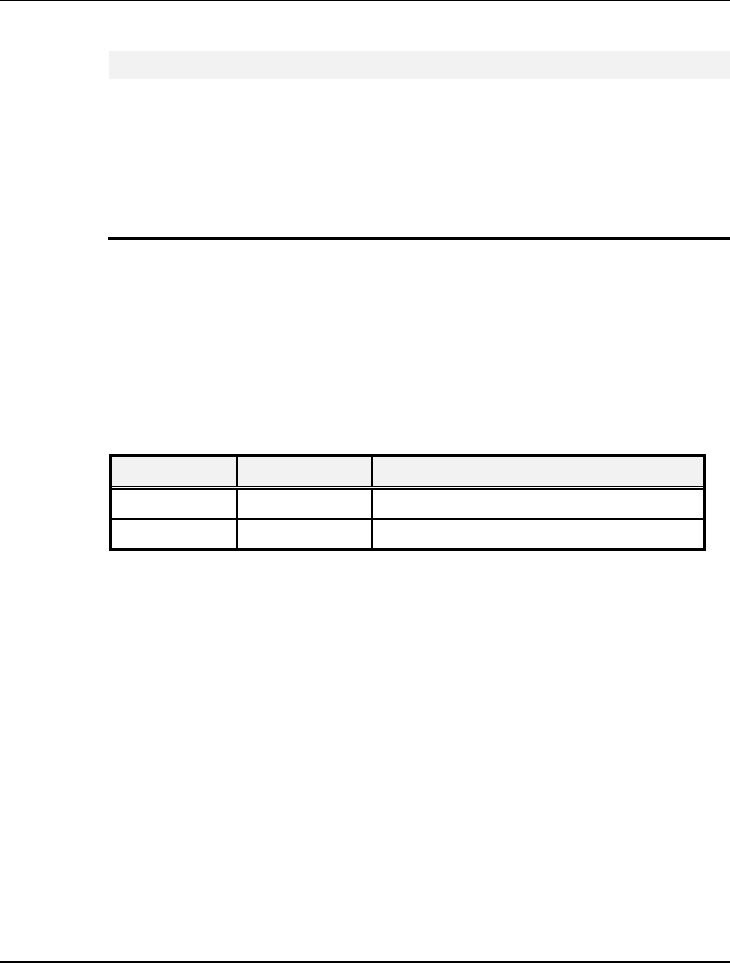
Using Your Notebook 3
61
☞
The optical disk drive is a Class 1 Laser Product.
3.8 Using PCMCIA Cards
WHAT IS PCMCIA?
PCMCIA or Personal Computer Memory Card International Association is a
non-profit trade association that defines the industry standard for the PC Card
technology. The goal of PCMCIA is to ensure that any PC Card can work in
any mobile computer built with a PCMCIA slot.
To allow manufacturers to add functions and technologies in the PC Card
form factor, PCMCIA has defined two PC Card types:
Type Thickness Sample Devices
Type II 5.0 mm Fax/Modem & Network Cards
Type III 10.5 mm Hard Disks (ATA Cards)
Type II Cards
Type II card has a thickness of 5.0 millimeters (mm). Type II cards are often
storage or communications devices such as Flash Memory, LAN, and Small
Computer System Interface (SCSI). Typical Type II cards include input/output
(I/O) features such as modems and LANs. The features for Type II Cards
include following characters:
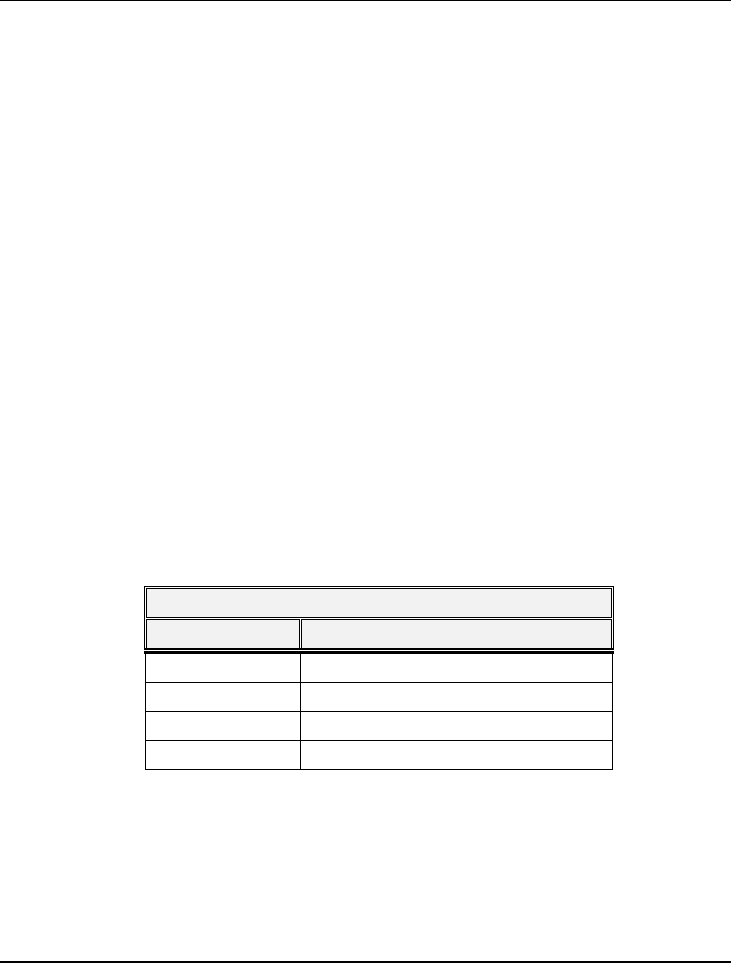
Notebook User Guide
62
• Type II Extended Cards
Many PC cards are Type II extended cards. The extended card has an
additional physical component that protrudes beyond the traditional card
size. The extension can be as large as 40 mm deep by 9.65 mm high. This
extension provides room for additional electronics as well as a location for
external connectors. The GPRS card is an example. The extended part is
for additional electronics and antenna.
• Communication Cards
Both network PC cards and fax/modem cards can use with your
notebook computer. However, if you use built-in LAN/Modem module
of this computer, it is not necessary to use those cards.
• Storage Cards
When you insert a storage PC card, PC card Adapter for other memory
card (i.e. Compact Flash card, Smart Media card...) or small hard drive
card in the notebook computer, it appears as a unique drive depending on
the type of card you are using.
The following table provides sample drive designations.
Sample Drive Designations
Drive letter Location/Device
C: Internal hard disk
D: Internal hard disk, 2nd partition
E: CD/DVD/RW/optical disk drive
F: Slot 0, high-speed memory card
Type III Cards
Type III cards are thicker (10.5 mm) than Type II cards and allow no
extensions. This notebook does not support Type III Card.

Using Your Notebook 3
63
WHAT IS CARDBUS?
CardBus is the high-performance 32-bit PCI bus master interface from
PCMCIA. It runs up to 33MHz clock speed and operates at only 3.3V. Your
notebook computer incorporates the CardBus inside the PC card slot. Aside
from 3.3V CardBus PC cards, you can also insert 5V 16-bit PC cards that can
also be detected and used by your computer.
INSERTING AND REMOVING A PCMCIA CARD
Your computer includes hot swapping capability, that allows you to exchange
cards while the computer is turn on and start using it immediately.
Inserting PC Cards
To insert a PC card into the PCMCIA slot:
1. Locate the PC card slot cover on the left side of the computer.
2. Insert the side of PC card with the 68-pin socket into the PC slot. The
face label of the card should also be facing up.
3. When the full length of the card is almost inside the slot, push firmly but
slowly, to ensure full connection with the computer. The PC card will be
detected and once the needed driver is installed, it will generate a beep
sound to indicate that the card is detected.
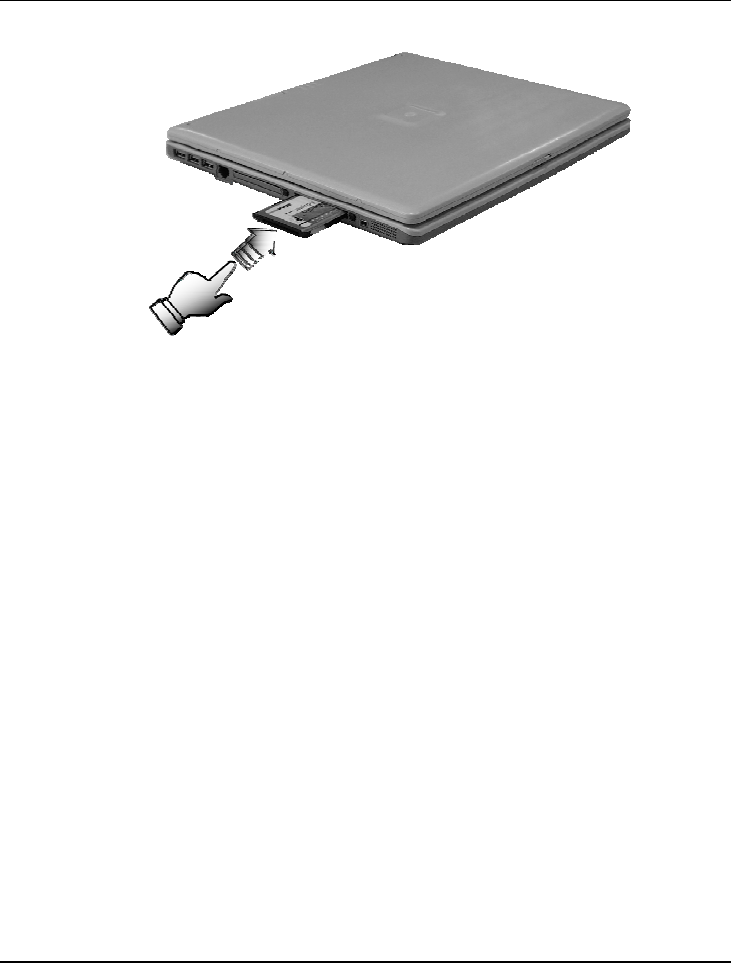
Notebook User Guide
64
Removing PC Cards
To remove a PC card from the PCMCIA slot, you should first disable the
PCMCIA card setting in the system as described followings:
1. Double click the PC card icon on the right bottom side of the task bar.
2. Select the socket from the list that you want to remove, and click Stop
button. The system then disables the function of PCMCIA card.
3. Then you can remove the inserted PC card, push the button found on the
right side of the PC slot to release the eject button. Then push it again to
release the PC card.
4. When the PC card has moved out a space out of the slot, hold the edges
of the card and slowly slide it out.
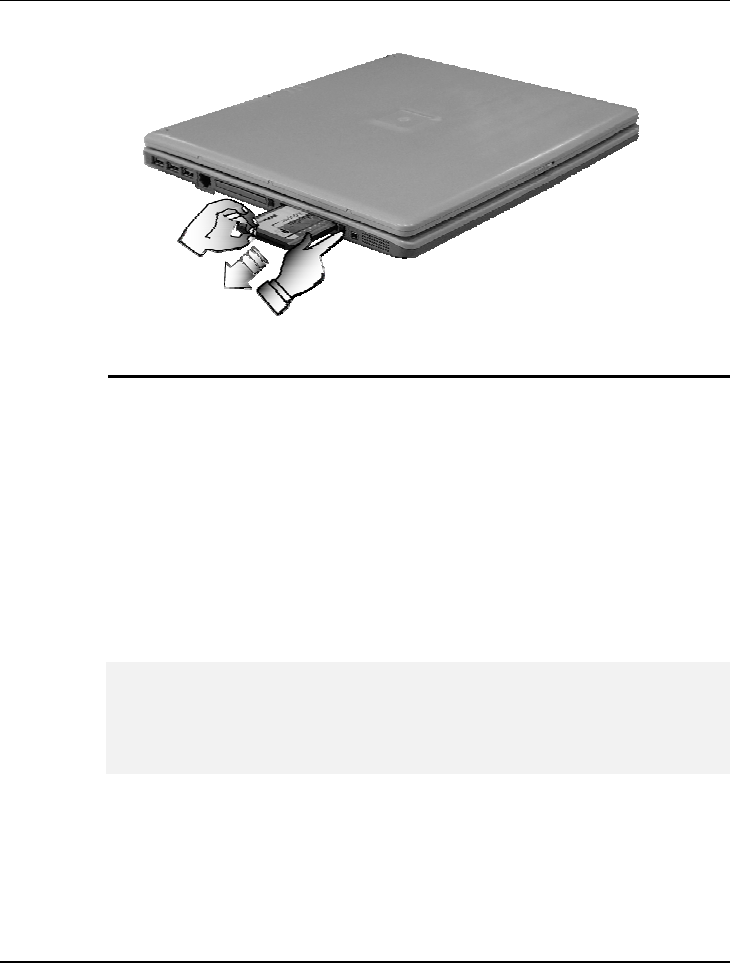
Using Your Notebook 3
65
MAKING PC CARDS WORK
Since PC cards come in different types and brands, making every card work on
your computer may not that be easy. PC cards like network, SCSI or
multifunction cards (MFC) need additional driver installation and configuration
in making the card work. This additional driver may already be built-in under
Windows that Windows will try to detect and prompts you if you want to
install the driver. If the driver is not included under Windows, you will need to
insert the driver CD provided by the PC card manufacturer into the optical
disk drive and install to Windows system. You need to read the manual guide
of the PC card on how to configure and operate the card.
☞
Some PC cards require additional system resources. Before inserting a PC
card you may have to disable either the USB port, or the 56K internal
modem. Check the Windows device manager to ensure that there are no
conflicts of resource amount those devices.

Notebook User Guide
66
HOT SWAPPING PC CARDS
Just like floppy disk drive, your PCMCIA slots allow you to replace one PC
card with another even while your computer is on. However, you need to
remember the rule that if the PC card is in use, you must not remove it.
☞
PC cards draw power even when not in use. To save energy, press the
button to disconnect the card when it is not in use.
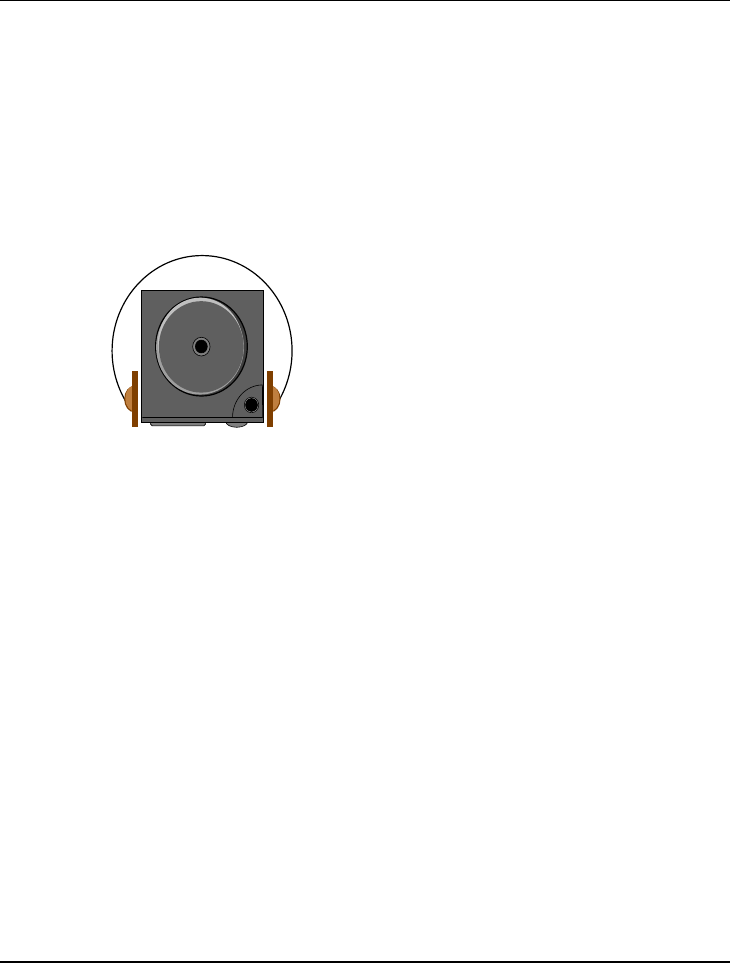
Using Your Notebook 3
67
4 Fun with Multimedia
This chapter lets you make full use of all the
multimedia features of your computer in having fun
and excitement during work or leisure. You will learn
how to mix and match the built-in sound system, use
optical disk drive in creating an exciting full
multimedia presentation.

Notebook User Guide
68
4.1 Notebook Multimedia Features
Your notebook computer is rich in multimedia features that make your
computing fun, comfortable, exciting and easy. Your computer is well able to
perform all multimedia tasks through the following:
• Intel® Pentium® M microprocessor powered by Intel® Centrino™
Mobile Technology
• Up to 1GB DDR SDRAM
• Optical disk drive for DVD/CD watching/playing and CD making
• Integrated Intel graphics engine.
• 16-bit Audio Sound System with built-in speaker and microphone.
4.2 Audio Sound System Features
Your computer has a built-in 16-bit stereo sound controller that allows you to
record, store, and playback voice, music and other sound effects with built-in
mixer controls. An integrated full-duplex microphone and twin mini-speakers
are also built-in into your computer to allow you to record and playback sound
anytime and anywhere.
On the right side of your computer, you will find the audio ports that include
the following:
• External 1/8-inch microphone jack that connects external microphone for
recording purpose.
• Earphone or headphone jack for personal listening.
• External thumb-wheel volume control.

Using Your Notebook 3
69
4.3 Setting Up the Audio Driver
Properties
Before you can start using the audio capabilities of your computer, you need
first to setup properly the audio driver after installing Windows. If you bought
your computer with Windows pre-installed, it is most likely that your dealer
have configured the sound driver for you. If not, you must refer to Chapter 2
on how to setup the sound drivers for Windows.
4.4 Windows Multimedia Programs
Windows provides several multimedia programs that you can run with the
built-in features of your computer. Pointing the Start button, Programs,
Accessories, then Entertainment, you will find the Multimedia programs
group. (The section below use Window XP as examples)
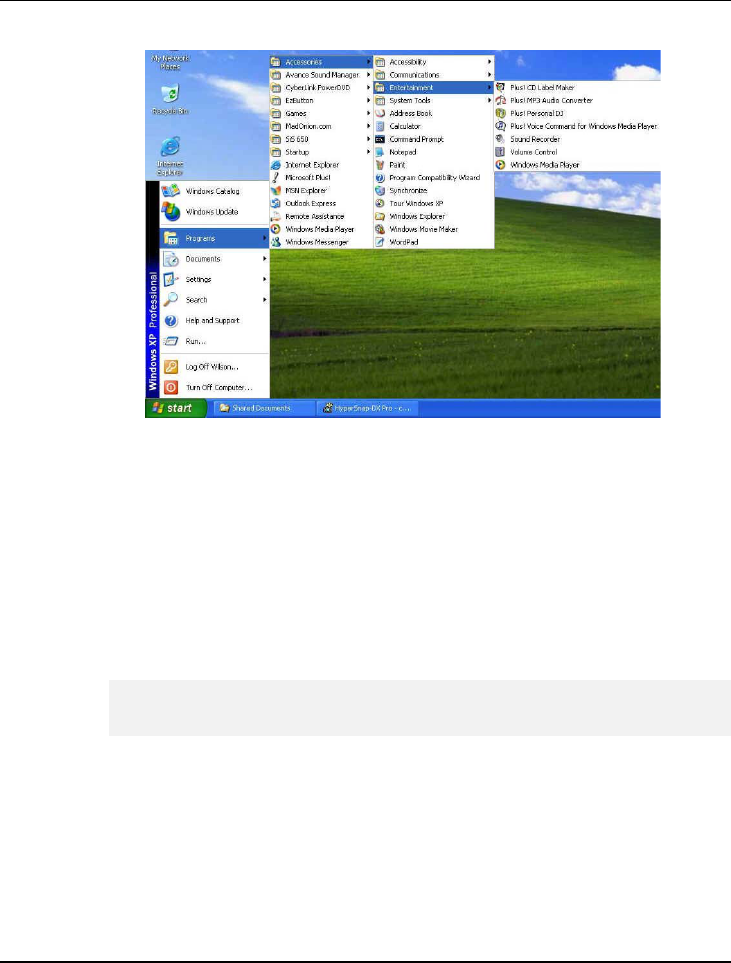
Notebook User Guide
70
Figure 4-1 Entertainment Programs Group
The standard multimedia components are as follows:
• Windows Media Player - for playing sound, video and animation files
• Sound Recorder - for recording sounds and playback
• Volume Control - for adjusting the volume of mixer
☞
For more information on how to operate these multimedia components, run
the program and click on the Help menu.
4.5 Recording Sounds
Your computer allows you to record voice and other sounds in several ways
and stores them as files on your hard disk. These voice or sound files can then
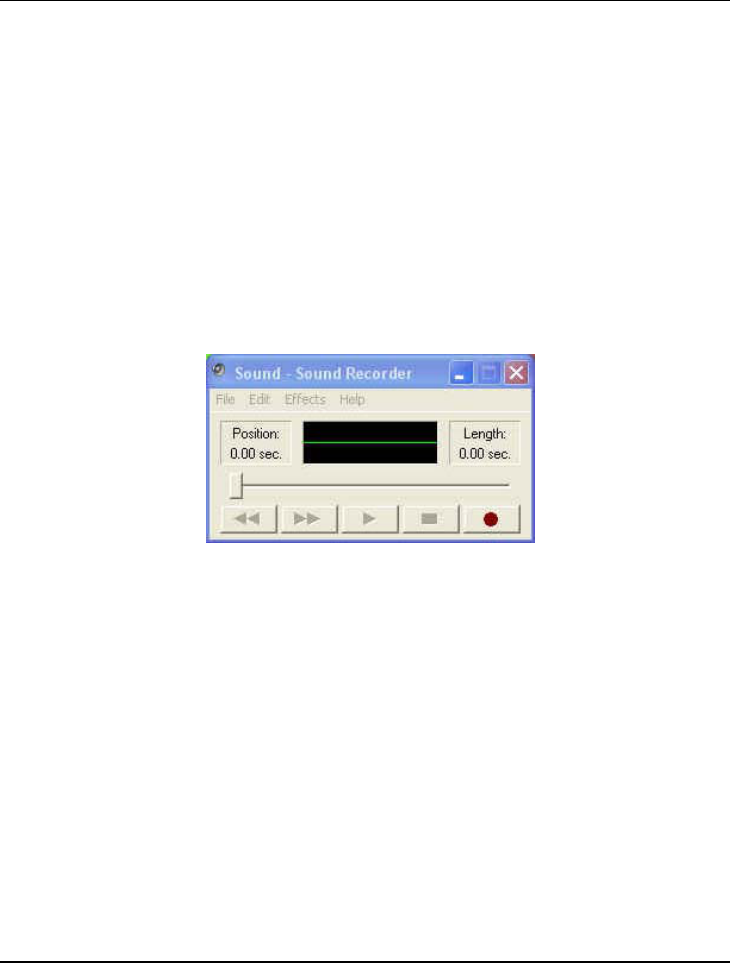
Using Your Notebook 3
71
be played back through the internal speaker or earphone jack using an external
speaker, headphone, or earphone set. You can also use the files as voice
annotations on many applications for more real presentation. This section will
describe briefly how you can record sounds under Windows operating system.
To record sounds, you need to run the Sound Recorder program from the
Multimedia program groups. The control buttons of the Sound Recorder are
simple to understand which comprise of the Fast Rewind, Fast Forward, Play,
Stop, and Record buttons. Click the Help menu on how to operate the Sound
Recorder.
Figure 4-2 Sound Recorder
The Sound Recorder also allows you to record sound from different input
audio source like the following:
• From the external microphone
• From the optical disk drive
Since you could record sound from different input sources, you must first set
the proper audio input recording device under the Recording Control panel.
To do this:
1. Double-click on the Volume Control on the taskbar or click Start button,
then point to Programs, Accessories, Entertainment and then click on
Volume Control.
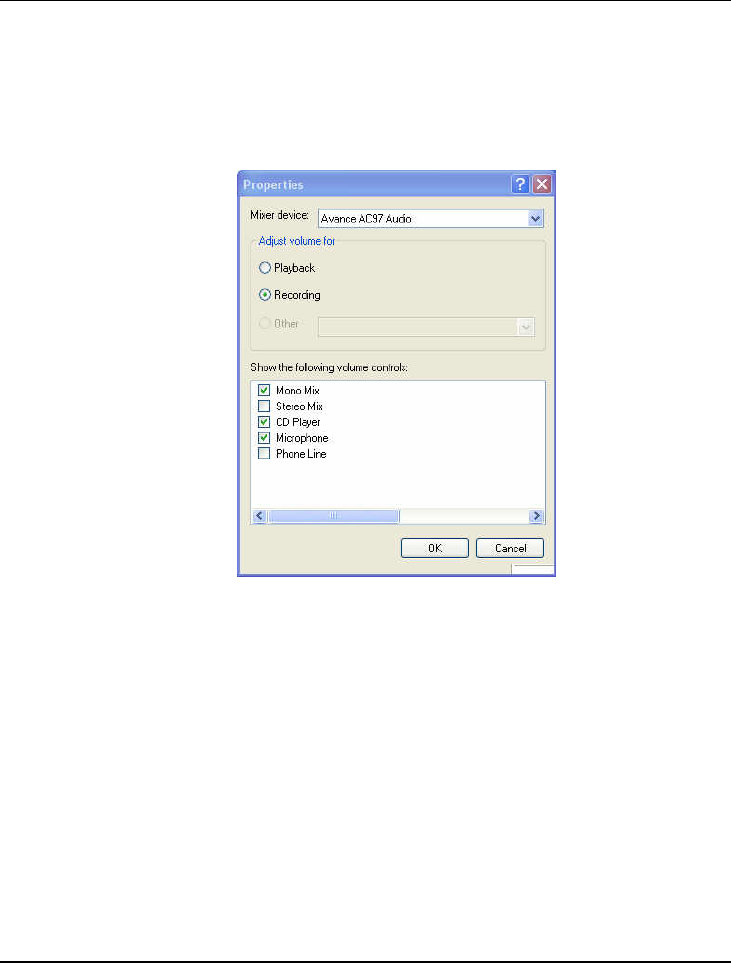
Notebook User Guide
72
2. Click Properties in the Options main menu.
3. Click the round button for Recording and tick off each component that
list in the "Shows the following Volume Controls" box.
Figure 4-3 Audio Properties
4. Click OK and the Recording Control dialog box will appear. Here, you
will select the input device for the recording source. If you want to record
from the optical disk drive with audio music, you must click on CD
Player.
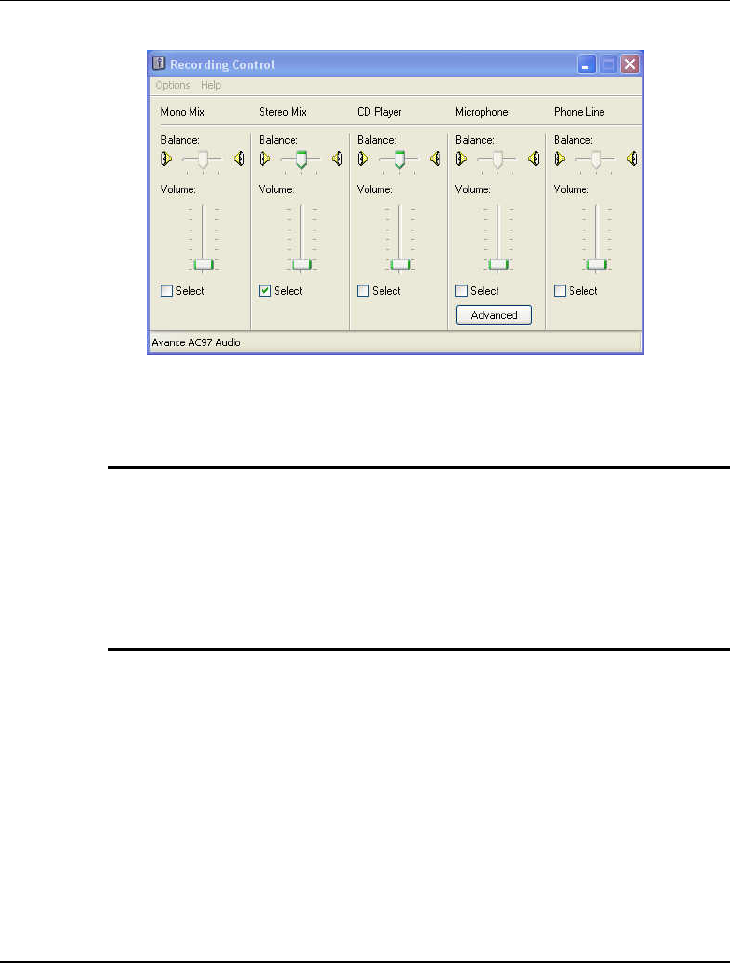
Using Your Notebook 3
73
Figure 4-4 Recording Volume Control
USING AN EXTERNAL MICROPHONE
Your computer allows you to connect an external microphone for high quality
recording. The external microphone jack is found on the right side of your
computer. Use only microphone with 1/8-inch mini-jack connector. Follow
the same procedure for recording voice.
USING THE BUILT-IN OPTICAL DISK DRIVE
You would normally use the optical disk drive for recording audio music from
the Audio CD. Follow these steps:
1. Activate CD Player volume on the Recording Control as discussed earlier.
2. Run the Sound Recorder program.
3. Insert the audio CD into the optical disk drive. Unless you have disabled
the CD auto-insertion notification for supporting Suspend mode, the CD
Player should automatically run after you have inserted an audio compact
disc and will start playing the audio CD.
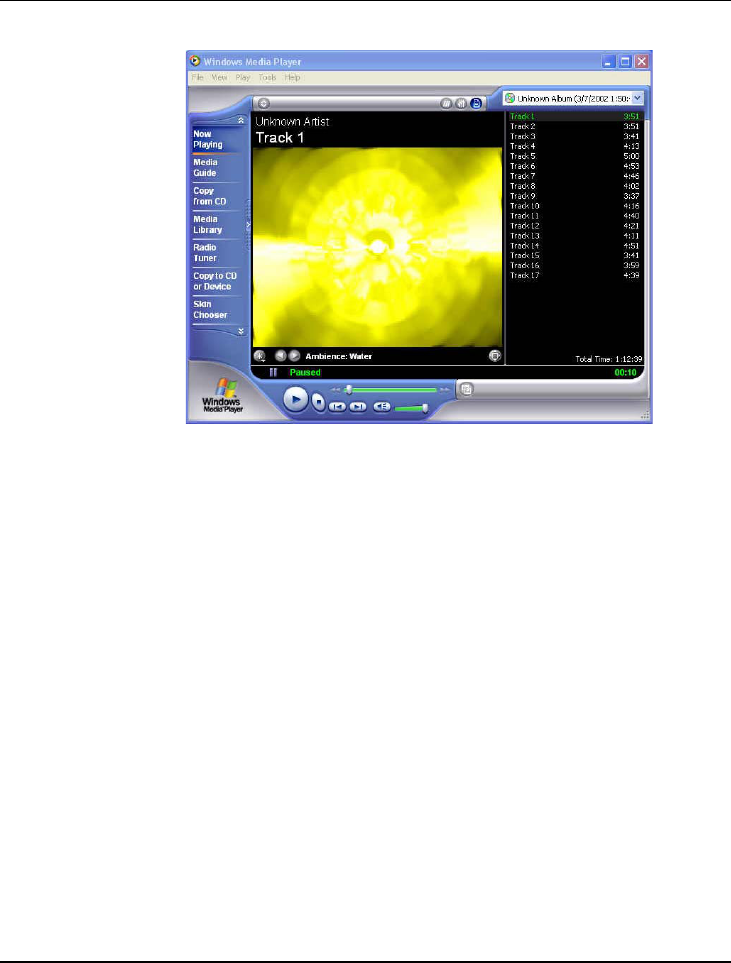
Notebook User Guide
74
Figure 4-5 Play Audio CD by Windows Media Player
4. Select the starting point where you want to start recording.
5. Switch to the Sound Recorder and press the Record button.
6. Switch immediately to the Windows Media Player and press the Play
button. You can adjust the volume control so you can also hear the music
while in recording.
4.6 Playing Audio and Sound
Your computer has built-in twin speakers to playback audio and sound. You
can also adjust the volume manually by adjusting the thumb-wheel volume
control found on the right side of your computer.

Using Your Notebook 3
75
For more quality sound output, you can choose to connect an external
amplified speaker or earphone from headphone jack. Always minimize the
volume first before placing the phone set to your ear.
USING THE WINDOWS MEDIA PLAYER
The easiest way to playback multimedia media files is to run the Windows
Media Player. Follow these steps:
1. Click on
Start, point to Programs, Accessories, and then
Entertainment.
2. Click on
Windows Media Player to start program.
3. Click on the File menu and select the file you want to play.
4. When the file is recognized and open, click on the Play button to start
playback.
4.7 Playing Video and MPEG Files
Your computer is capable of running video motion files as well as MPEG
(Motion Picture Expert Group) files on CD, DVD, or CD-RW. By using
software MPEG program, you can watch real full-motion picture on your
computer. You can also run the Windows Media Player under the
Entertainment programs group as well to show all media device programs.
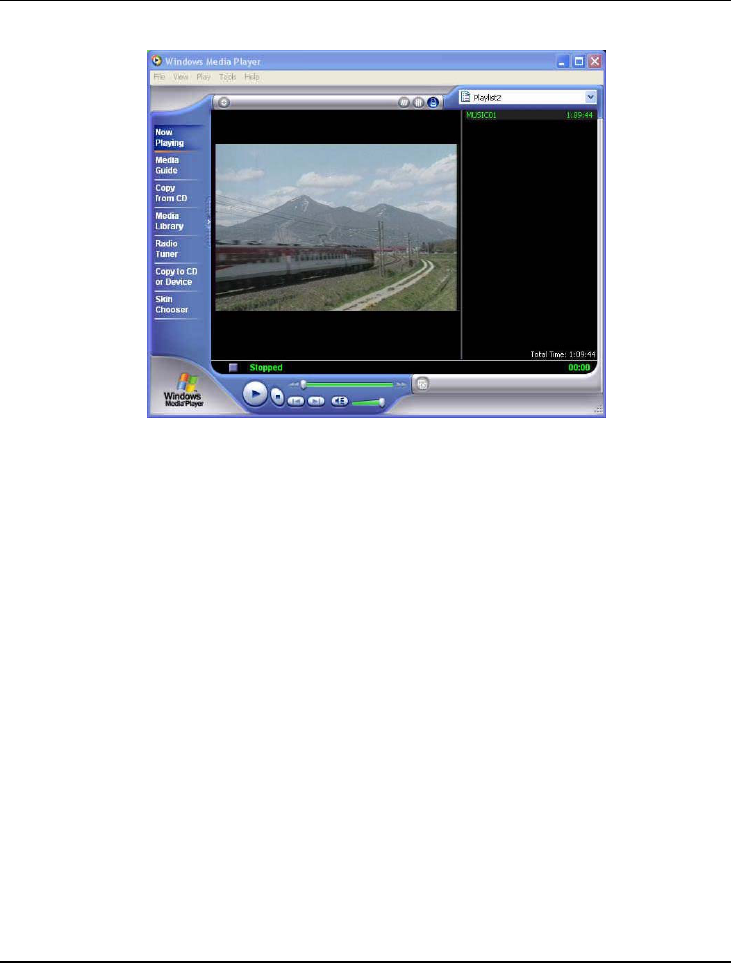
Notebook User Guide
76
Figure 4-6 Windows Media Player
4.8 Using DVD
DVD is the breakthrough in superb full-motion picture playback. One disc can
contain at least 4.7GB of information, capable of holding one full-length
movie with soundtracks, subtitles, and different languages. Much more, the
DVD-ROM drive of your computer is backward compatible with CD-ROM
drive so it allows you to use any CD as well. It also works the same as the CD-
ROM.
To playback DVD titles, you would need a software MPEG-2 program and the
DVD-ROM, DVD/CD-RW Combo drive.

Using Your Notebook 3
77
☞
For best DVD playback, please enable the DMA function of this notebook,
for how to enable the DMA channel on both optical disk drive and Hard
Disk, please refer to driver installation on section 5 of chapter 2. Moreover,
you can enable Hardware Accelerator if the software MPEG-2 player you
are using has supported this function.
4.9 Using Rewritable Optical Disk Drive
Function
CD-RW drive is a device that can write digital data to CD-RW and CD-R
compact disk (CD). With this device, you can backup your own data to CD-R
or CD-RW disc for mass data storage and safely retaining. The CD-R disc can
be written several times until the CD-R is full; the CD-RW disc, furthermore,
can write and erase data repeatedly. Please refer to the related user manual
about the CD-RW software.
☞
Please pay attention to the copyright of the software or data you want to
backup. Backup or distribute the software or data might be illegal
according the restriction of the law.